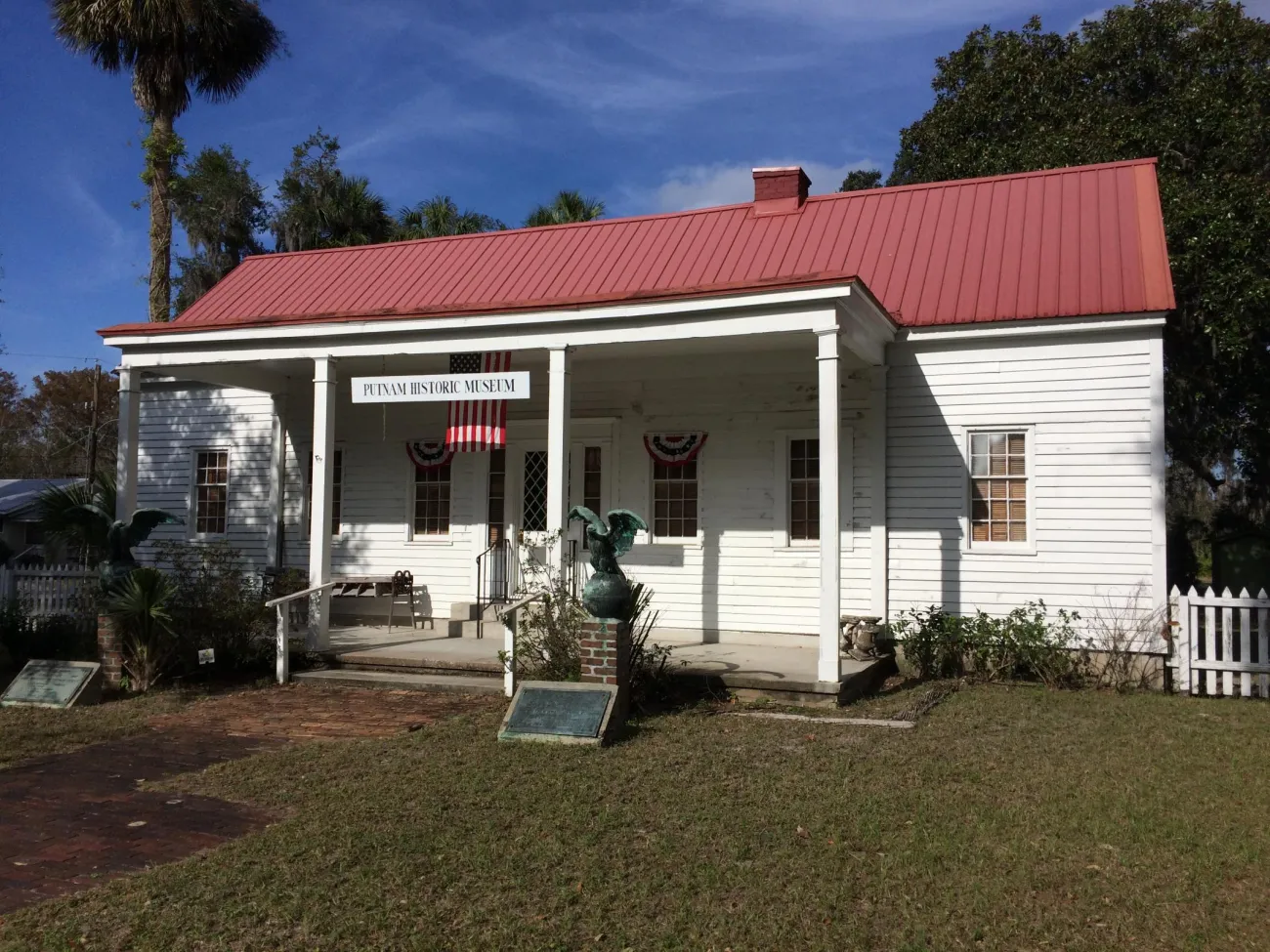The small town of Palatka, Florida is about 60 miles south of Jacksonville, 45 miles east of Gainesville, and 29 miles southwest of St. Augustine. It’s the home of St. Johns River State College and the Florida School of the Arts, headquarters of the St. Johns Water Management District, and the site of Ravine Gardens State Park.
A quiet little town today, Palatka has a rich and colorful history.
“I’m a fifth generation on my mother’s side, born and raised in Palatka,” says Larry Beaton, historian of the Putnam County Historical Society. “My great-great grandfather was Robert Raymond Reid, who was the son of the fourth territorial governor, and he came here to Palatka in the early 1850s.”
Beaton’s maternal grandmother lived to be over 100 years old, and would entertain her grandchildren with stories of how she remembered Palatka as a little girl.
“She remembered walking along the riverfront with her mother and she said that the river was just like a highway,” says Beaton. “She said any direction you looked there were boats coming or going to the docks at Palatka bringing tourists and cargo.”
The Putnam Historic Museum is a small building, but is full of artifacts detailing Palatka’s long history. One exhibit shows how Native Americans were the first inhabitants of Palatka, as documented by naturalist William Bartram in 1774.
The British controlled Florida from 1763 to 1783. During that period an Englishman named Denys Rolle established Rollestown in what is now East Palatka. When the Spanish regained control of Florida in 1783, Rolle abandoned his settlement.
Florida became a United States Territory in 1821. It was during this period that Palatka developed as an active port community on the St. Johns River.
The Second Seminole War of the 1830s caused problems for Palatka as buildings were attacked and burned. In 1838, the U.S. Army established Fort Shannon to protect Palatka. The Putnam Historic Museum is one of the only original Army buildings from the Second Seminole War still in existence.
“This has been identified as the Officer’s Quarters for Fort Shannon,” says Beaton. “The building was originally down on the riverfront. The Putnam County Historical Society and the City of Palatka acquired the building in 1984, and had it moved to the site here next to the Bronson-Mulholland House.”
Florida became a state in 1845, supporting growth in Palatka. In 1849, Palatka was named Putnam County seat, and it was incorporated as a town in 1853. The following year, Judge Isaac H. Bronson built Sunny Point, now known as the Bronson-Mulholland House.
Over the century after it was built, the Bronson-Mulholland House changed hands many times. Abandoned during the Civil War, the house was used by Confederate soldiers as a lookout for Union gunboats, and later was used as a barracks for Union colored troops. In 1866, it became a school for children of freed slaves. Later serving as a rooming house, the property fell into disrepair in the mid-twentieth century. Plans were made to demolish the house and build a playground.
“That’s how the Putnam County Historical Society was formed, was to save the house from destruction,” says Beaton. “The city restored the house through a federal grant and now the house museum is a partnership between the City of Palatka and the Putnam County Historical Society. It’s been open for tours since 1977.”
In the decades following the Civil War, Palatka thrived. It was a popular tourist destination, particularly for those seeking health benefits from Florida’s climate. By the 1880s, Palatka was a transportation hub for railroad lines and steamboat traffic on the St. Johns River.
A fire nearly destroyed the town in 1884, but it rebounded. In 1893, Palatka’s Wilson Cypress Company became the second largest cypress mill in the world.
As the twentieth century approached, Palatka began losing its stature as a thriving city. The Big Freeze of 1894-95, devastated citrus crops.
“Also the railroads taking people further south and opening up the interior of Florida was kind of the beginning of the end of Palatka being a major tourist destination,” says Beaton.
Today, Palatka has a quaint historic ambience with buildings preserved and restored in two nationally designated historic districts.

